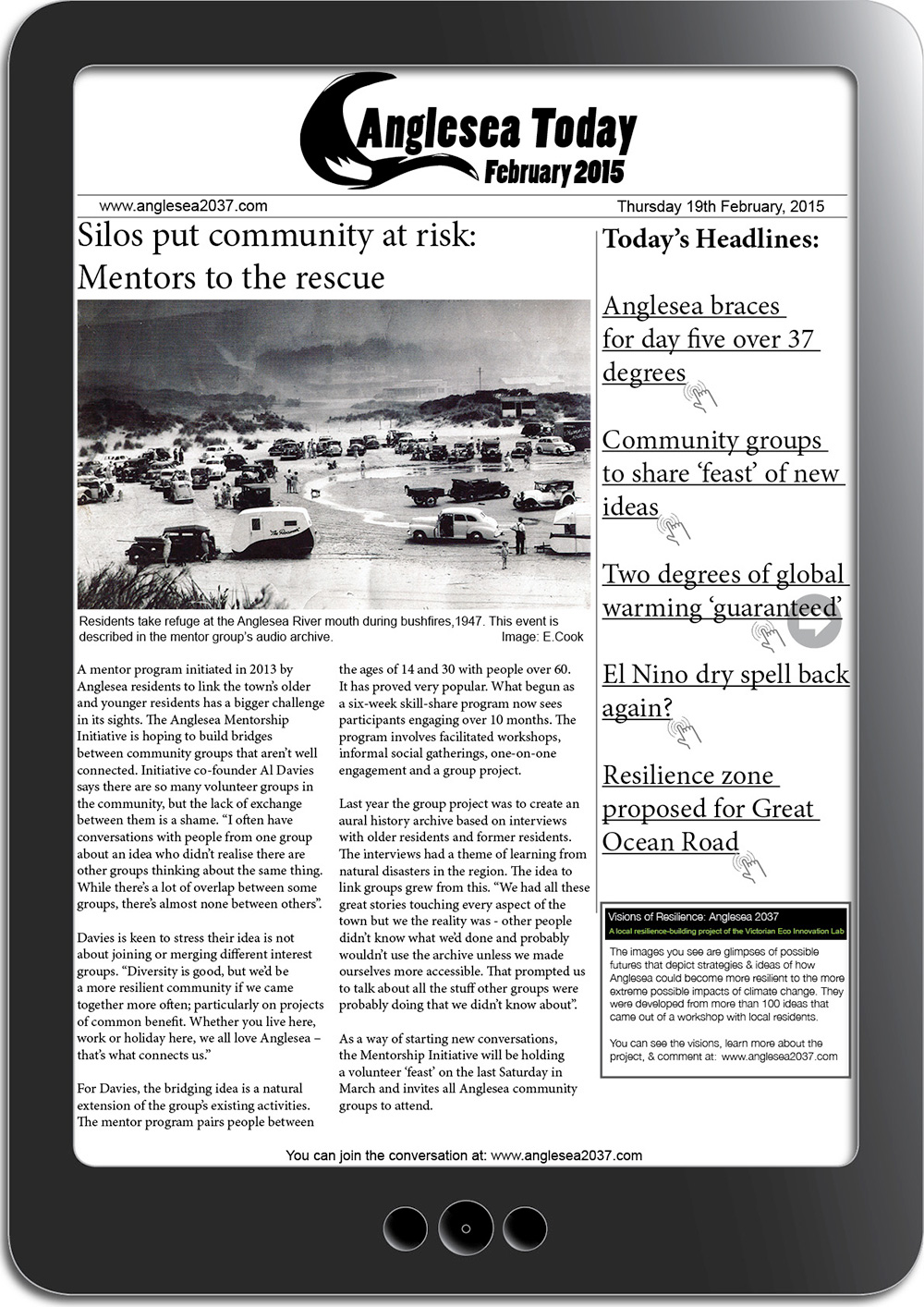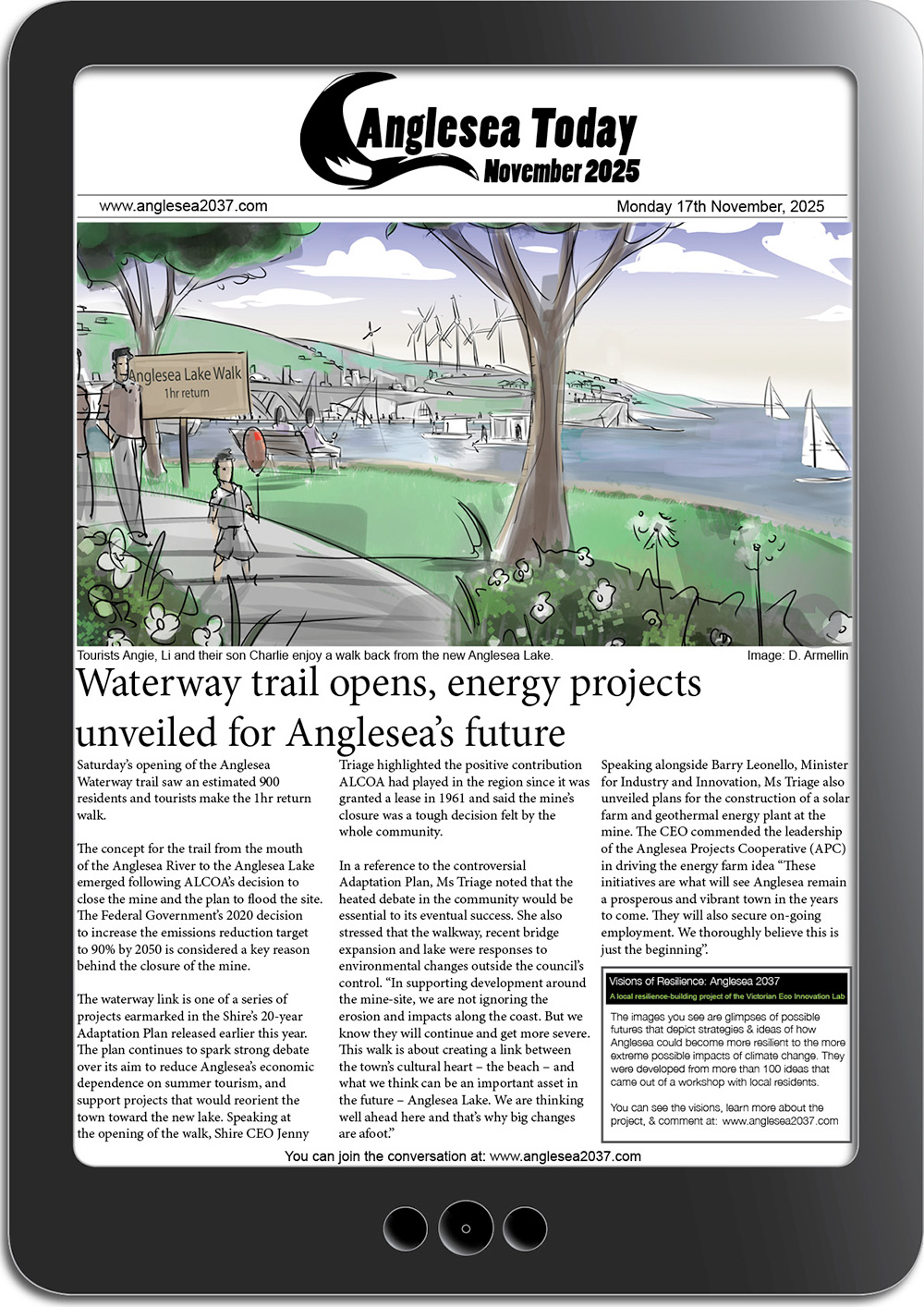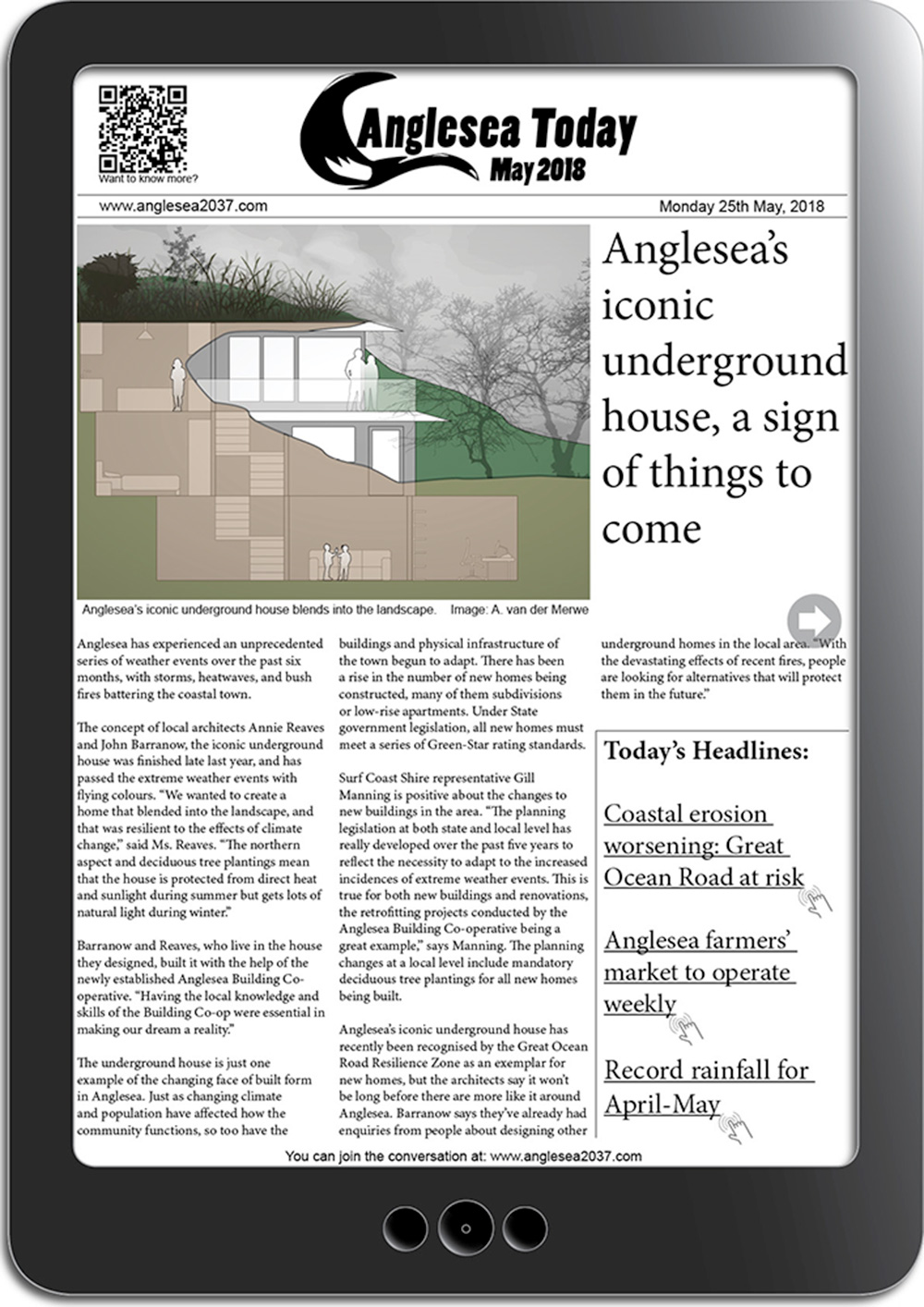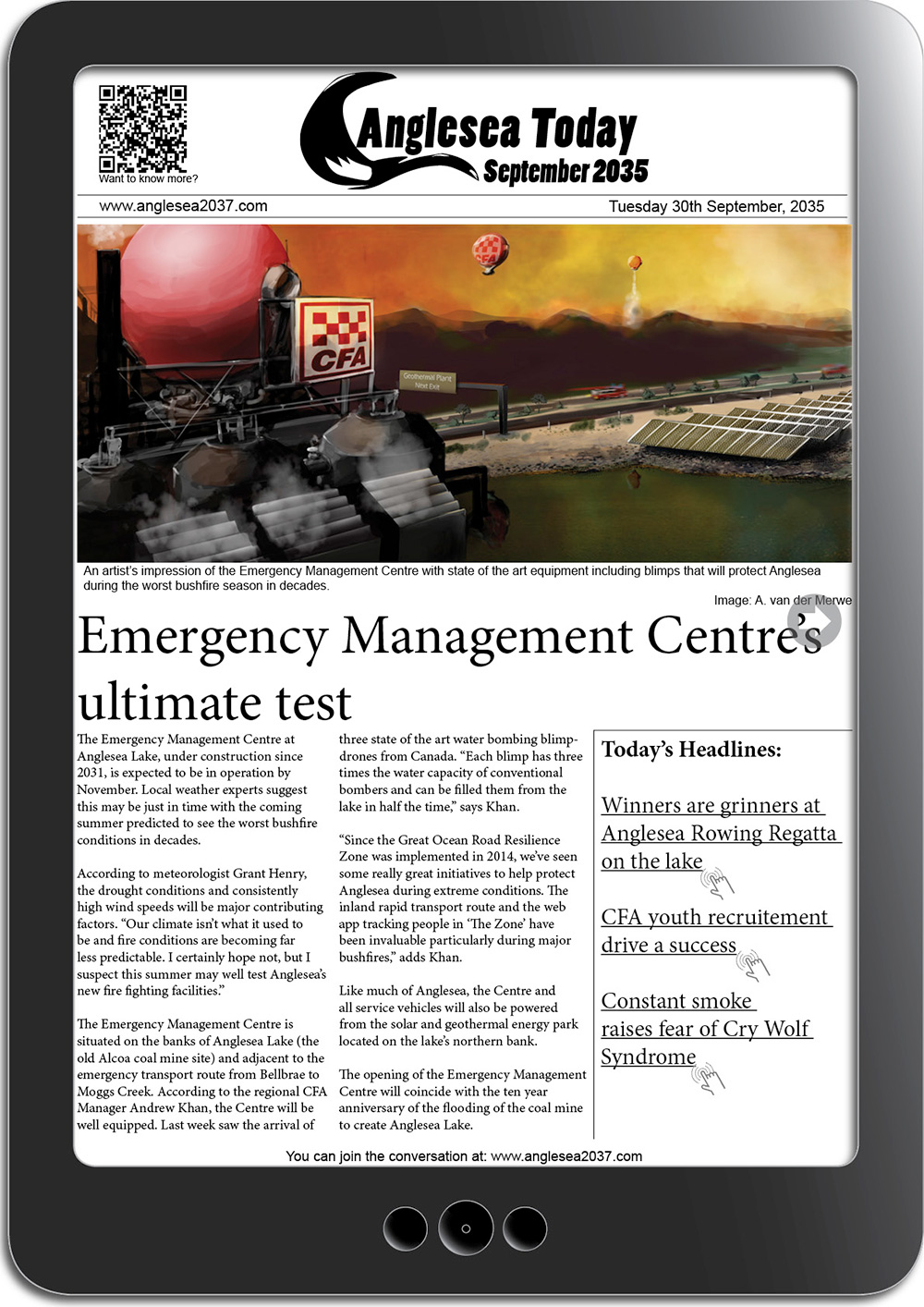Anglesea 2037
This page showcases resilience building proposals developed by members of Anglesea community (a coastal town south west of Melbourne).
These proposals or ‘visions of resilience’ were developed from participatory workshops conducted for a Federally funded design-led research project. Participants were asked to explore the implications and possible adaptation responses to extreme climate scenarios set in 2037. Results were translated by professional illustrators into visual glimpses of the future showing how proposed changes might look.
When you look through the following images, bear in mind that participants were given a set of challenging climate conditions to work with. If current rates of greenhouse gas emissions continue weather extremes in Anglesea will pose a major challenge for the community by 2037. Coastal erosion caused by sea levels of up to 15cm higher than today will threaten multiple sections of the Great Ocean Road and key low-lying buildings and assets. Hotter, drier weather will see an increase in the frequency and severity of bushfires combined with longer heatwaves, water shortages and blackouts. These hazards will put more lives at risk and strain medical services and transport routes. More short intensity rainfall periods will also create problems with localised flooding along the lower stretches of Anglesea River. Furthermore, without dramatic changes to political and social priorities, by 2037, key climate tipping points will have been crossed. This will force communities to plan for gradual but irreversible rise in sea level rises of more than 6m, major changes in ocean and terrestrial (on-land) ecosystems and more radical shifts in climate conditions.










